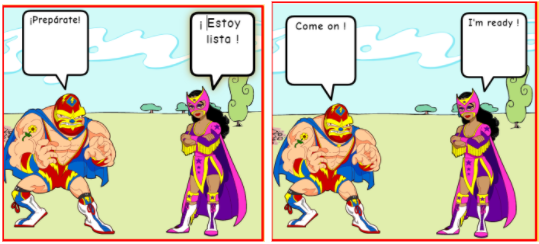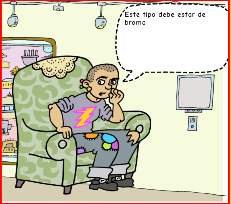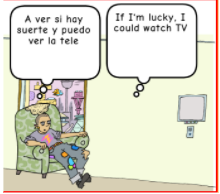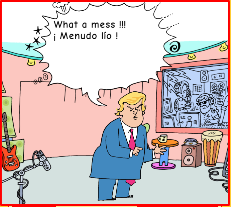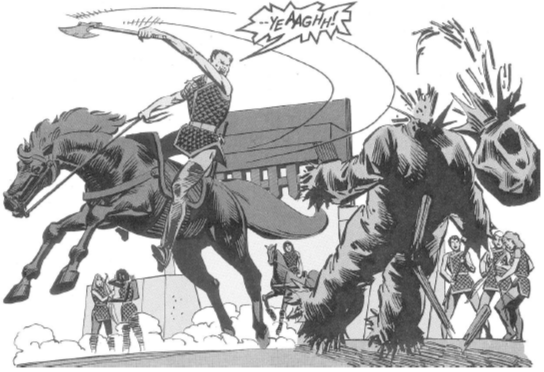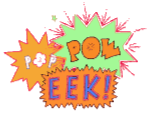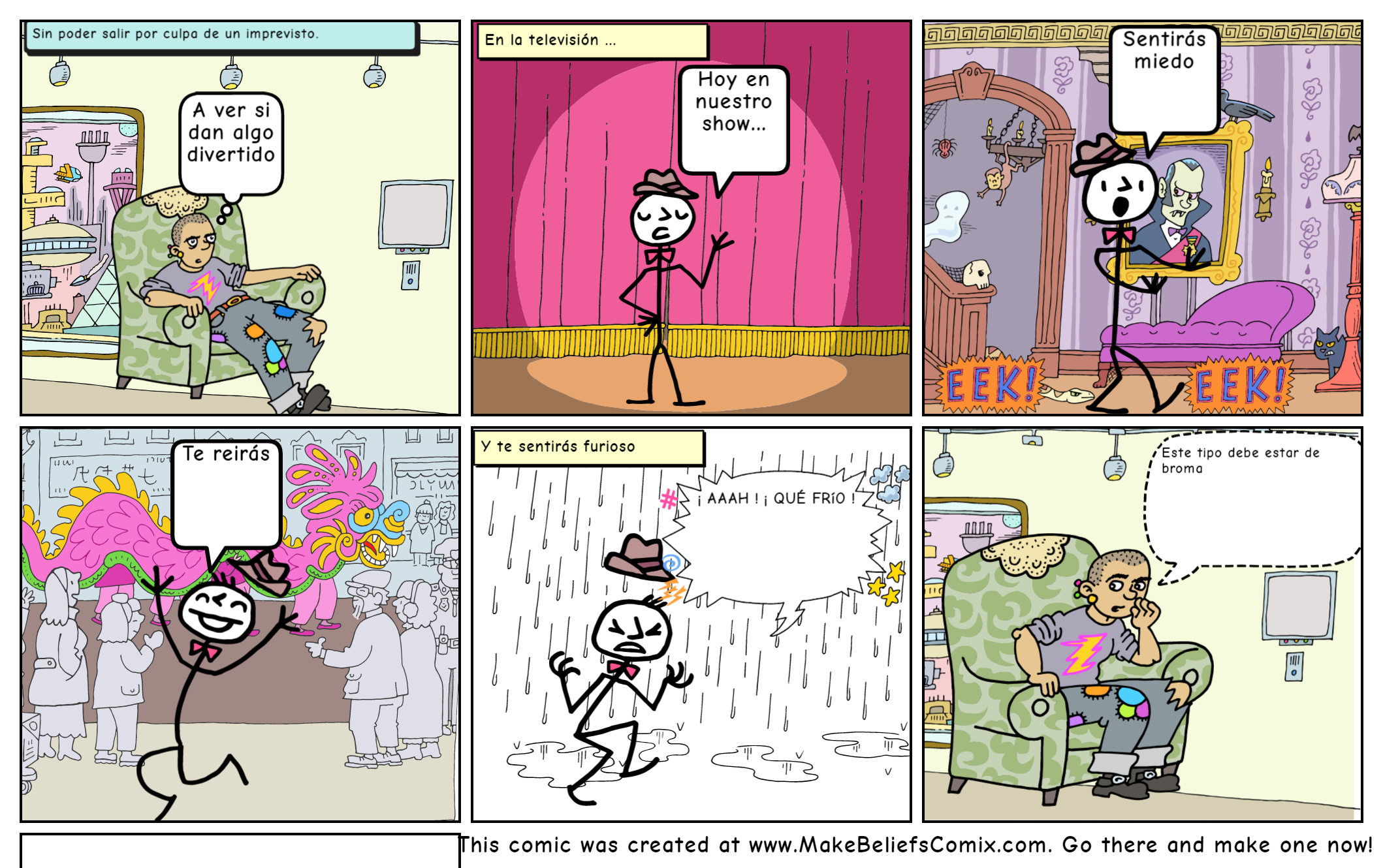Creating storylines for comics
Pure visual
It is very important not to forget that a comic book is a story told in a fundamentally visual way. Stories are told through images. Each story is told on a certain number of pages, each page is made up of a series of panels and each panel contains an illustration. Dialogue, narration, etc. add to the detail, but it is the images that are the main element of narrative. Stories have to be visually interesting, and therefore storylines have to be written with images in mind. In this sense, long conversations are generally not visually interesting.
Format
The main elements of a comic script to tell the story are: the description of the situation, the texts, the dialogues and the sounds. The story is divided into pages and panels. Each panel is described, so that it is clear what has to be drawn. Following the description, the text that goes in the panel is listed, indicating whether it is a narration box, dialogue or sound effect.
Let’s look at the structure of the format
PAGE [Número]
- Panel description
- Frame: [Narrador]
- Character 1: [Diálogo]
- Character 2: [Diálogo]
- SFX: [Efecto de sonido]
Although comics are based on illustrations and text, it is possible to narrate or tell a story without text (narration and dialogue). Building a story using only a series of drawings without text can be complicated and risky if it is not done well, as the reader may not understand the story we want to tell. Remember that the fundamental factor in comic book design is to communicate clearly.
THE DESCRIPTIONshould state, from the first frame, the characteristics of the environment, the objects and the characters, as well as the actions they perform. Each change of scenery or each appearance of a new character requires the description of one and the other.
TEXT BOXES (CAPTION) help the reader to assimilate certain changes of time, for example: “Two days before…”, or of translation in space, “Meanwhile, in the laboratory”. Similarly, they can provide us with additional information about the characters or events we are seeing (“Dr. wanted to do the test, but there were no instruments. Suddenly…”).
Texts should not be used to describe what is already drawn or illustrated. They should only be used when there is no other option. They are indicated in the script by (CAP).
DIALOGUES are inserted in balloons. In addition to reproducing the conversation of the characters, they can be used to express thoughts according to their form. It is important that the dialogues are brief, so that they do not take up too much space and give the drawing the greatest importance.
Ballon types:
Talk or speech balloon : It is the typical rounded balloon with a beak pointing at the speaking character. Nothing is indicated in the script.
Whisper Balloon: Like the talk balloon but with a dashed line. Indicates whisper, lower voice. Indicated in the script by (Wh)
Thought Balloon: Like the talk balloon but with the pointer based on decreasing circles. Indicated in the script by (Th).
Jaggy/Shout Balloon : Talking balloon with the outline of broken lines and peaks to express extreme emotion, shouting, onomatopoeias etc. Indicated in the script by (Sb)
Source: [Marx, C. (2012). Writing for animation, comics, and games. Routledge.]
SFX: SOUNDS are expressed as onomatopoeias through words that imitate sounds and noises. Thus, we have the sound of an engine (ROOOM, ROOOM!), a fracture (CRAC!), a gunshot (BANG!), a roar (ROAAAR!), the rattle of a machine gun (RATATATATATATATATATATAT!), with no limits to the auditive imagination.
If the panel is mute (NO COPY) is indicated in the script. In comics we have other types of balloons and ways of expressing actions, changes, etc. which can be consulted in the additional resources. For example, the sound or voice of a radio, television or other electronic device is indicated by (elect) in the script and in the panel by a text balloon with a spiked outline. However, this and other types of balloons are not available in the tool we are going to use in this course.
Example of a comic book script
Below is an example of a script from which the illustrator develops the images and inserts the texts according to the annotations.
SCRIPT
Title: AN EVENING AT HOME
PAGE 1
Panel 1
Description: View at an angle from the left. A young man with shaved hair, loud T-shirt, trousers with a hole in the left knee, coloured patches on the right leg and military boots is leaning back in the armchair in his living room watching television. The boy looks on with an expression of disappointment and boredom. The television is fixed to the wall. Behind the armchair is a painting of a futuristic city. On the ceiling of the room there is a strip with 3 spotlights.
CAP: Unable to meet due to unforeseen circumstances.
Boy (Th): Let’s see if they show something funny.
Panel 2
Description: Front view. Theatre stage with the curtain down. Pink curtain with yellow fringed edging on the floor. In the centre, the presenter is depicted in a single line with a bow tie and hat and a calm appearance, announcing the show. A spotlight illuminates the presenter.
CAP: On TV …
Presenter: Today on our show…
Panel 3
Description: Front view. Horror house background, showing a picture of a vampire with a lighted candle on each side. Below a sofa and on the right a floor lamp with a black cat behind it. On the other side of the sofa is the start of a wooden staircase with a handrail adorned with the head of a human skull. On the ceiling is a candle lamp with a monkey hanging from it. The presenter appears in the foreground walking to the right with outstretched arms and a frightened expression. The floor creaks as you walk.
Presenter: You will be scared.
SFX: eek ! eek !
Panel 4
Description: Front view. On a street with people watching a street show with a Chinese dragon. The presenter appears in the foreground with a jubilant expression jumping to the left.
Presenter: You will laugh.
Panel 5
Description: Front view. In a rainy street with puddles on the ground. The presenter appears cowering and looking angry because he is getting wet.
CAP: And you will be furious.
Presenter (Sb): AHHHH ! IT’S COLD !
Panel 6
Description: Front view. The boy in the foreground, sitting in his lounge chair with an incredulous expression, looks sideways to the left with his left hand open near his mouth to speak in a low voice.
Boy: (Wh) This guy must be kidding.
RESULT: ILLUSTRATION FROM SCRIPT





